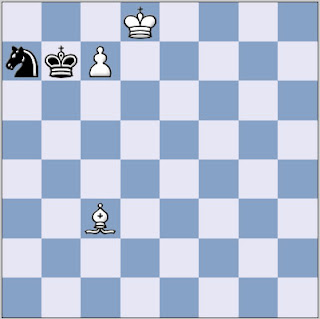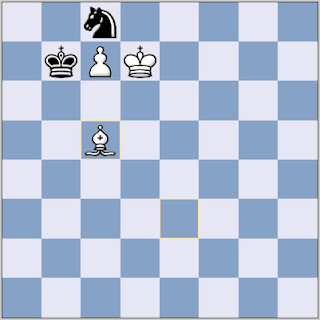One piece of advice I heard recently was:
"don't bother too much with the theory of knight endings"
Which is probably fair comment.
Knight endings don't occur very often and the manouevres required to force a pawn through to queen can be complex. However, it's still useful to have an idea whether a position should be won or lost, and 'fun' to look at the occasional solution.
Knights can usually defend against a bishop and pawn if you can get your king in front of the pawn, but fail when the king can't blockade the pawn. The typical win, in this case, involves manouevring the bishop to restrict the knight's mobility and then advancing the pawn. When the pawn is a bishop pawn though, the drawing chances (as usual!) increase.
Take a look at this position from Averbakh's Chess Endings: Essential Knowledge,

White carries out the first stage of the 'winning' manouevre, restricting the knight's mobility:
1 Kd7 Nc8; 2 Bd4 Ne7; 3 Be3 Nc8; 4 Bc5
Everything seems to have gone to plan, but can you see how Black salvages a draw (first 2 moves of the solution)?

4 comments:
Is there a stalemate resource? 1...Ka8 and if 2.Kxc8 it's stalemate?
Hi Ryan,
that's the right first move... well done.
What are you going to play against 2 Kc6 (instead of Kxc8)?
Best regards,
Roger
2 Kc6 Na7?
Hi Ray,
unfortunately 2 ... Na7 loses to 3 Bxa7 Kxa7; 4 Kd7,
but, there is another move that saves the game.
Roger
Post a Comment